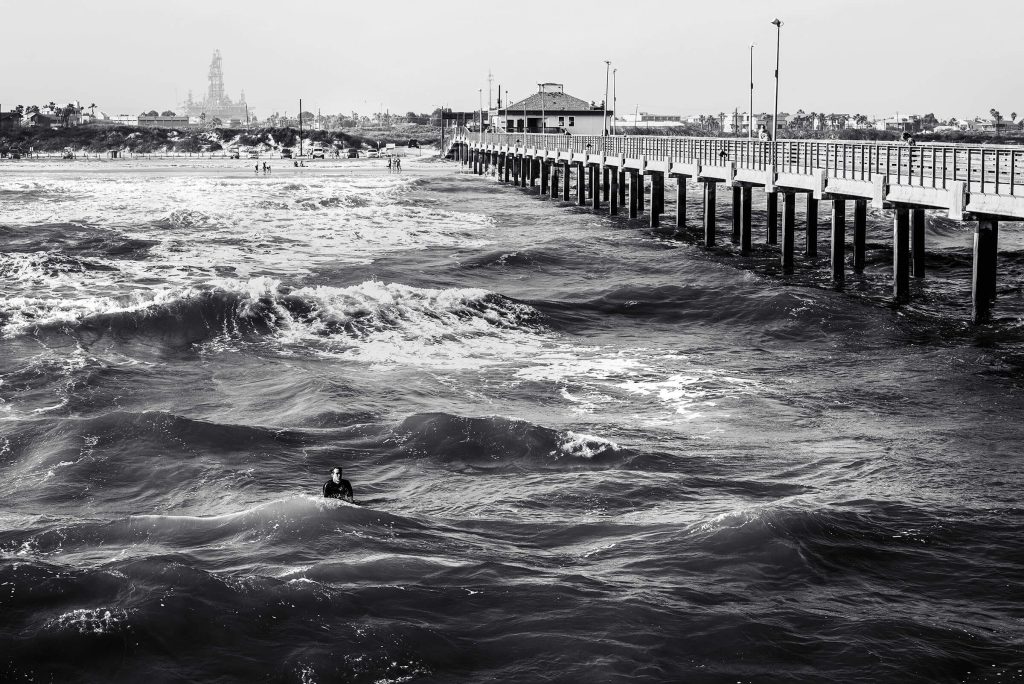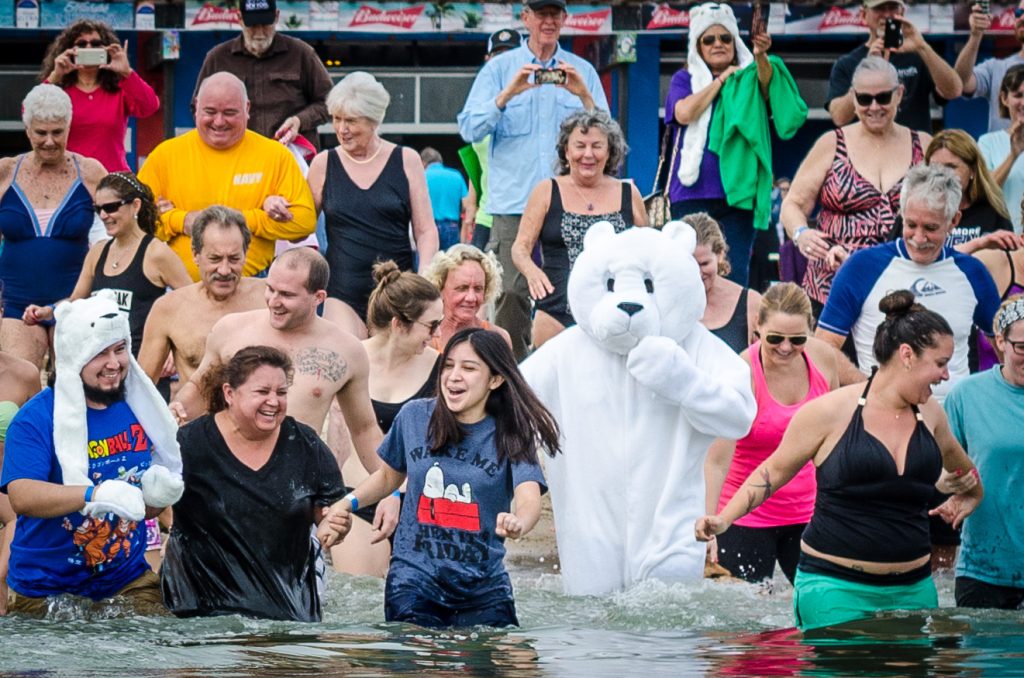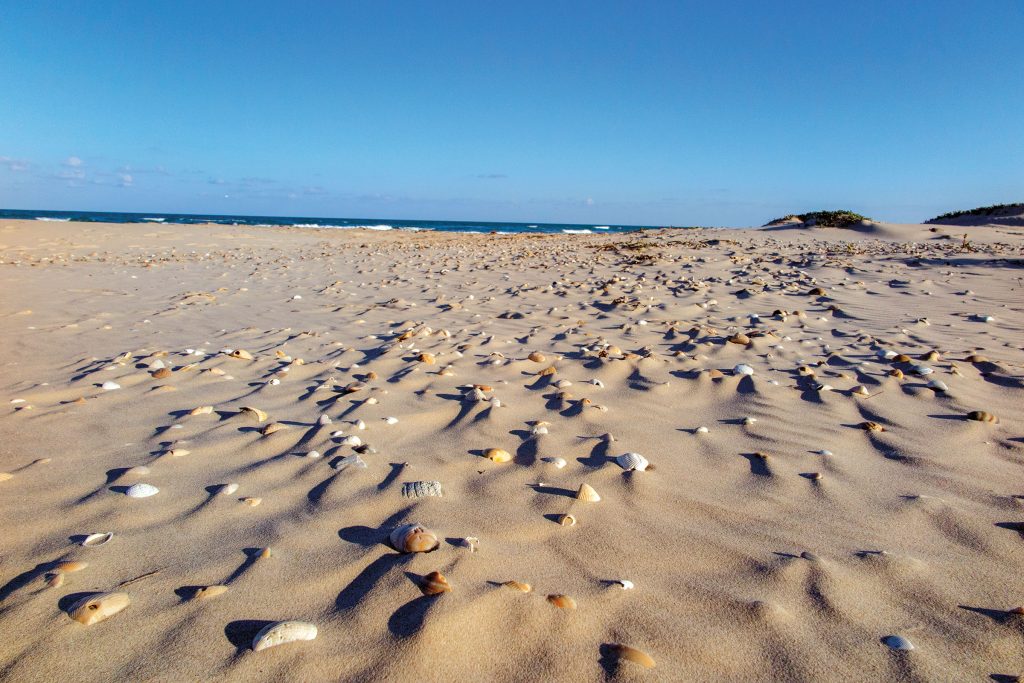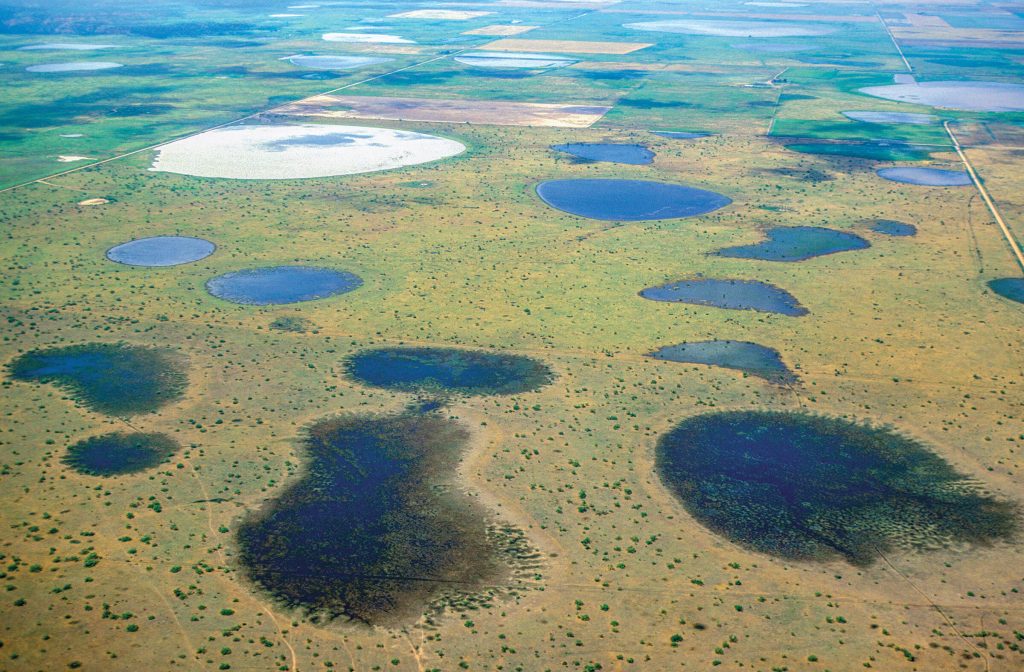Behold the Bounty of the Blanco
The splendid and fragile beauty
of the Hill Country’s keystone river
The Narrows, a limestone gorge on the Blanco surrounded by private property.
Rivers in Texas
run the gamut from bucolic babbling brooks to churning whitewater, from rocky dry channels to wide and muddy waterways. The Blanco River, which winds 87 miles through the eastern Hill Country, stands out for exhibiting all of those characteristics at one time or another. I should know. The Blanco is my river.
Twenty-eight years ago, our family moved to Wimberley to be near the Blanco. I’d been hooked on swimming at Barton Springs, Austin’s 68-degree spring-fed swimming pool. When it was time to move, we decided to jump ahead of the inevitable suburban sprawl while looking for another spring-fed place to swim.
I was sold on the house my wife had found the minute we drove over the Blanco on Bendigo Crossing, a low-water bridge also known as the Slime Bridge. Upstream, people were splashing around in the clear water, their laughs punctuated by shrieks of pure joy. Marco! Polo! Bright shafts of late afternoon sunlight shot through the branches of tall cypress trees hovering above the riverbank. Never mind what the house looked like.
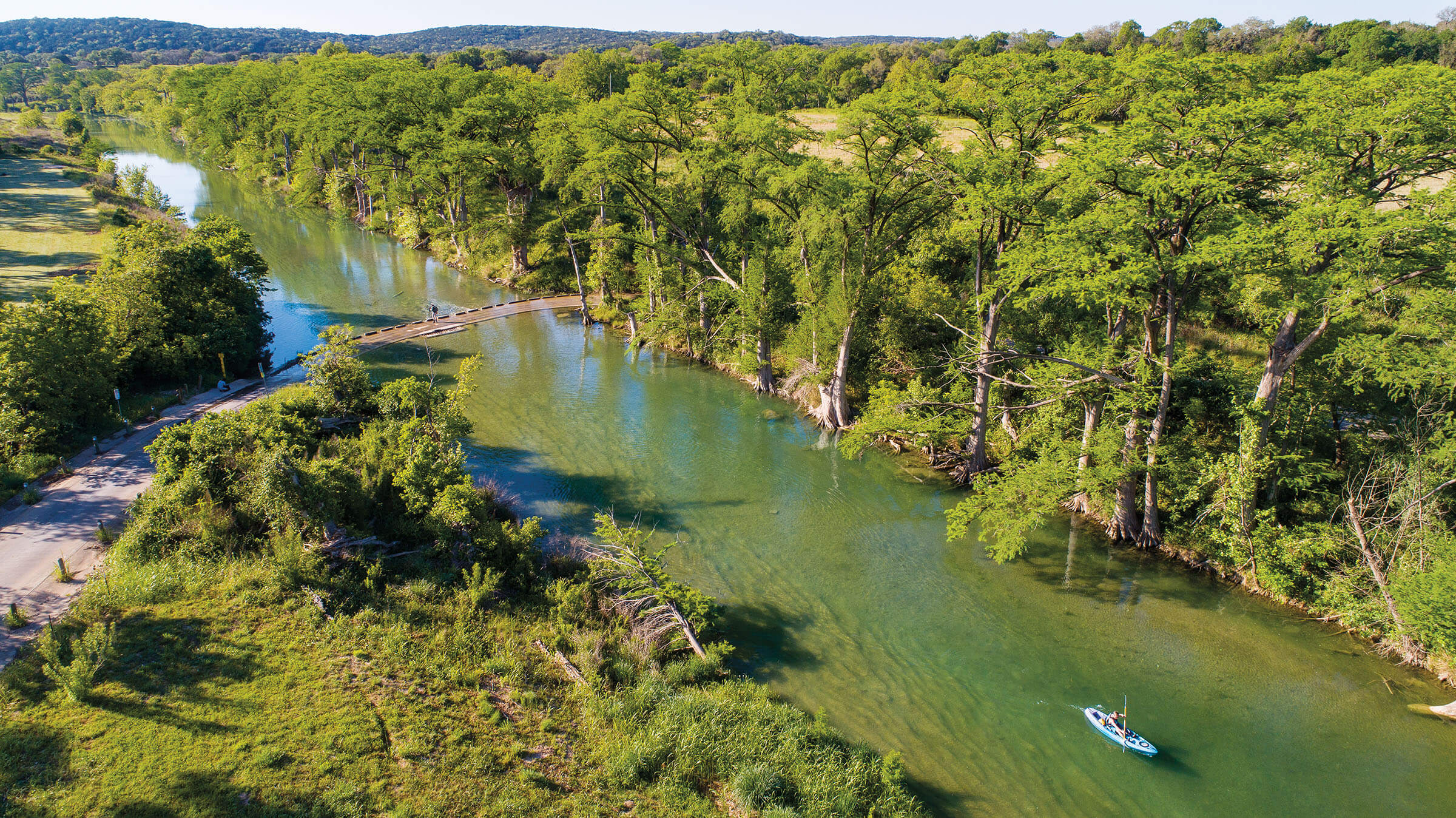
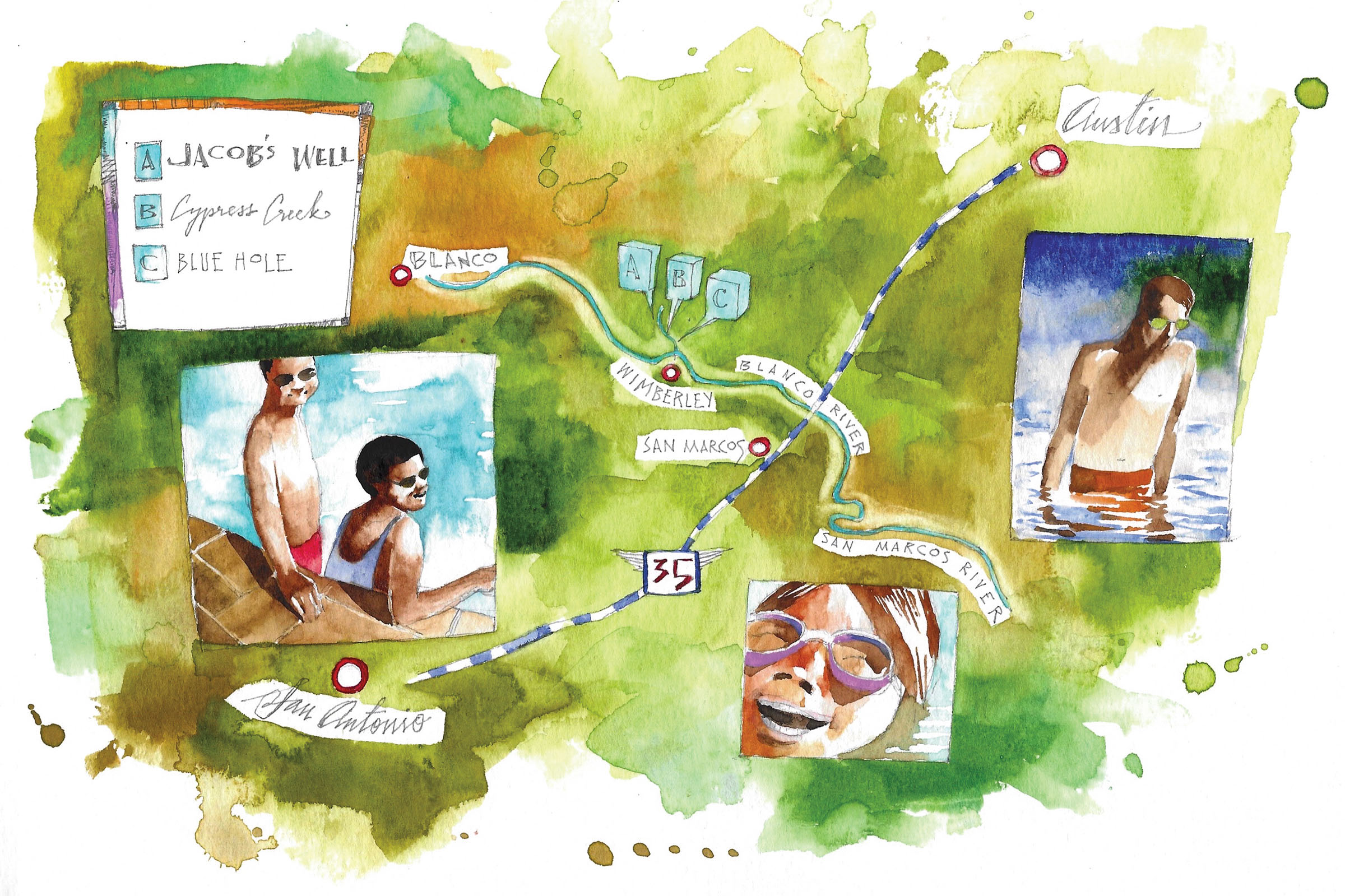
The vintage ’70s ranch-style home needed some love and care, but it would do just fine: It was a half-mile from the Blanco and gave us river access through a property owners’ park.
The first time I jumped in the Blanco, I was taken aback. The water tasted clean. The visibility underwater didn’t compare to Barton Springs’ clarity—the suspended limestone sediment in the Blanco clouds the water and gives the river its name, which translates to White River. But it tasted clean. Smelled clean too.
From April through October, I swim in the Blanco. It is one of the greatest pleasures I know. It’s a pleasure I share with growing crowds of both locals and visitors who converge on the river’s cypress-lined banks at places like Blanco State Park in Blanco; Blue Hole Regional Park on Cypress Creek, a tributary of the Blanco in Wimberley; and Five Mile Dam Park, a 34-acre Hays County park at the lower end of the river near San Marcos. On summer weekends, the parks routinely fill to capacity.
The crowds have grown as suburban sprawl has infiltrated Hays County. The county’s population grew nearly 50% from 2010 to 2019, making it the nation’s second fastest-growing county, according to the U.S. Census.
“The Blanco has always been a hidden gem with little access, fiercely hoarded and protected,” says Ryan McGillicuddy, a Texas Parks and Wildlife Department conservation biologist who advises landowners on land management. “But the Hill Country continues to become carved up, and whether landowners like it or not, more people are coming to the river.”
Over the past year and a half of COVID-19, I’ve gotten to know my particular stretch of the Blanco even better. Swimming in the river almost every warm day has been a saving grace. Fallow season walks have opened my eyes to the subtle shift of the seasons. The bird and bat migrations, I now realize, aren’t a twice-a-year migration, but rather a constant, steady symphony of movement throughout the year.
When the wind kicks up, you can’t see the Blanco’s bottom for the chop. When the flow is high and fast following a flood, there’s enough whitewater to haul out the kayak, and as soon as the muddy current clears up, go paddling. The river is never the same. And no matter how stressed out it might appear to get, it always comes back. The Blanco has never let me down. The question is: Can we hold up our end of the bargain?
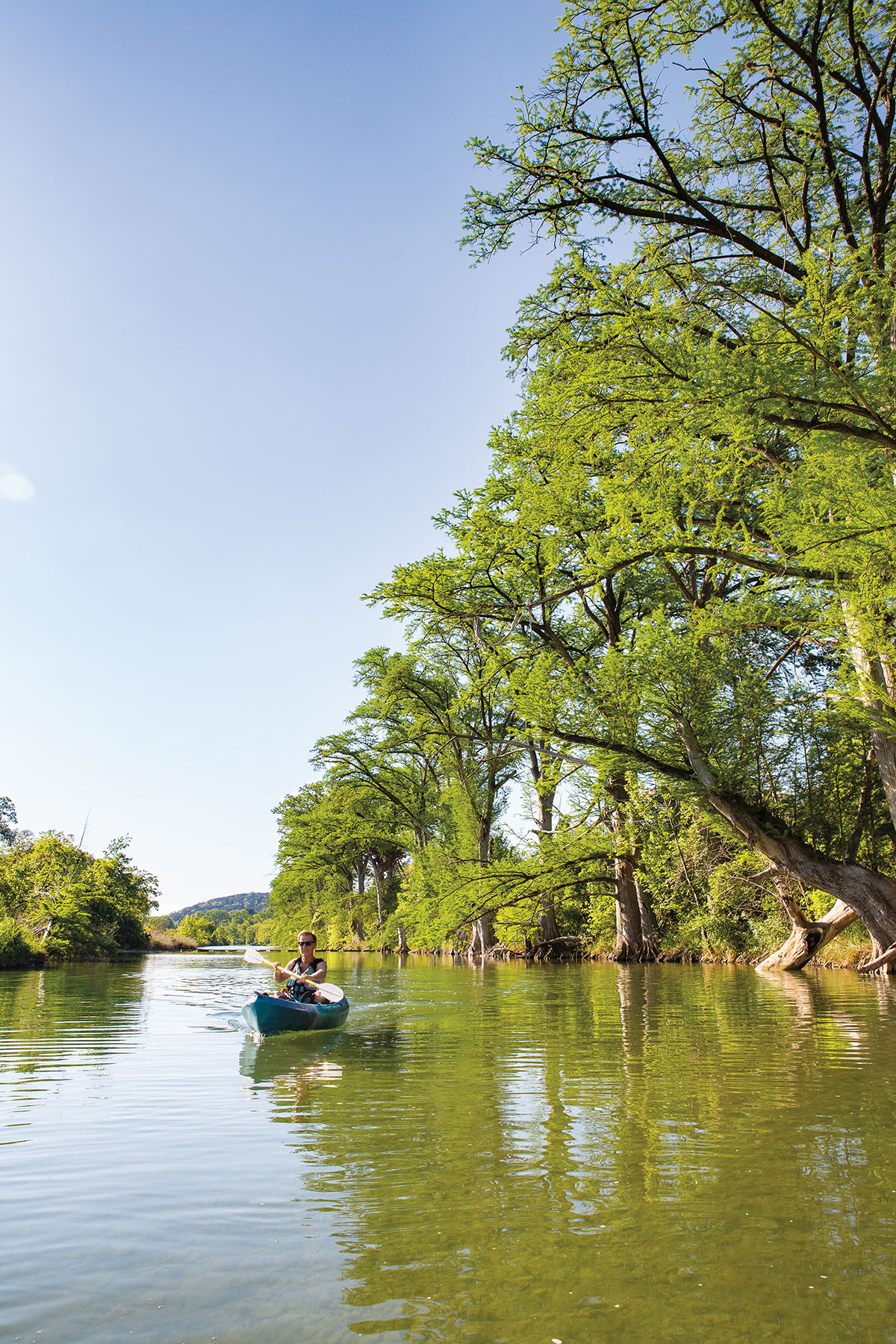
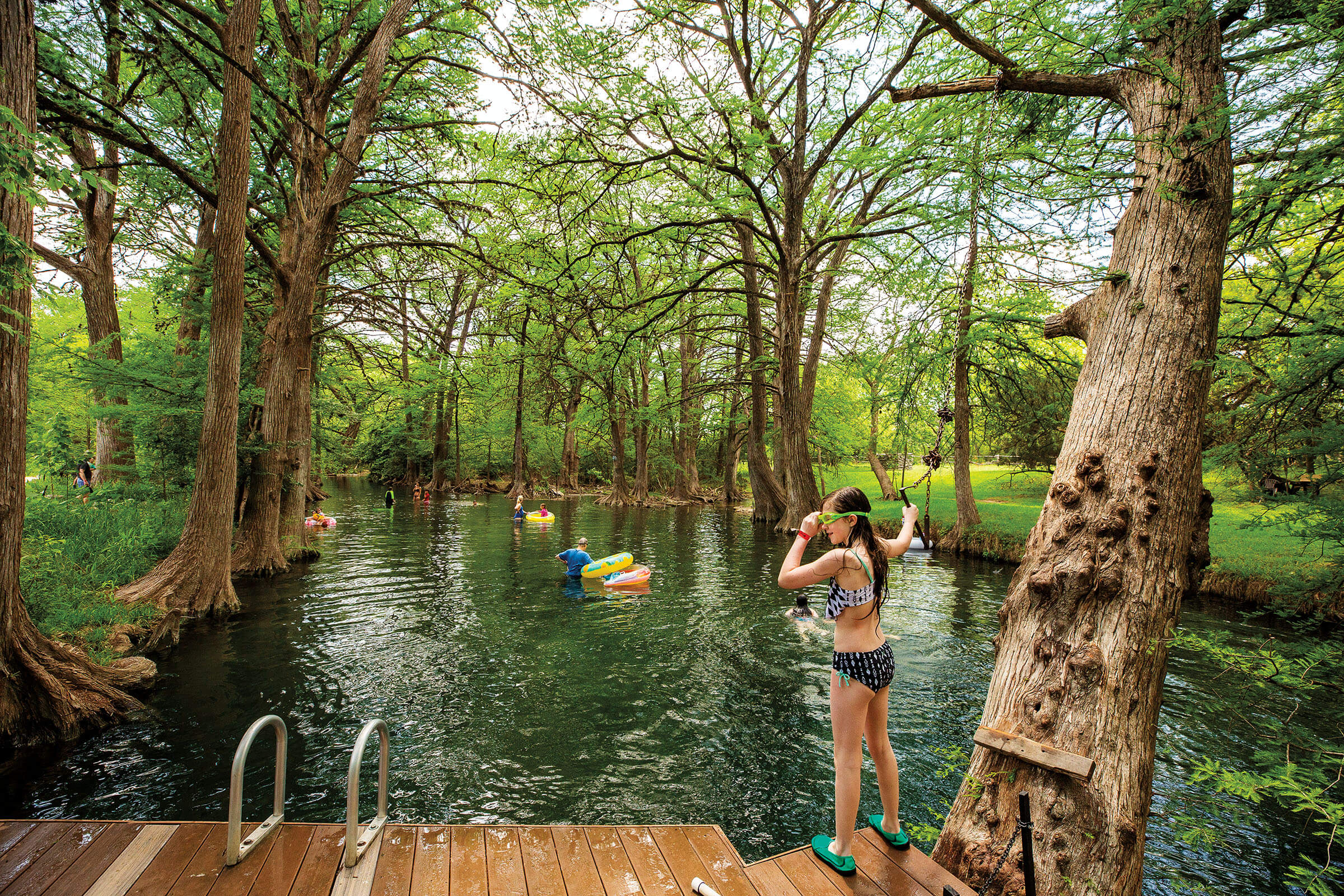
The Blanco—locally pronounced “Blank-o,” rather than the Spanish “Blahn-ko”—is the bellwether river of the Hill Country. It’s notorious for its frequent flash floods, treasured for its semi-pristine water quality and quantity, and fretted over because of threats posed by rapid population growth. While human development encroaches the river now, it wasn’t always this way. Few written accounts exist of early European explorers in Texas visiting the Blanco. The topography was too rugged, and the river valley too defended by Native Americans, particularly Lipan Apache and Comanche, who were hostile to incursions by outsiders.
The Blanco begins as a cluster of springs in Kendall County, running shallow as it enters Blanco County and growing as it courses beyond the town of Blanco into the Wimberley Valley and Hays County. It joins the San Marcos River just downstream of the city of San Marcos. Along the way, the Blanco traverses a landscape of cliffs, steppes, canyons, tributaries, waterfalls, springs, and rapids.
The Blanco River bottom is mostly hard limestone and absent natural vegetation. Its water quality remains close to unsullied. On numerous occasions, people have told me the Blanco is the second-cleanest river in Texas. The Devils, the Frio, and the upper Nueces rivers have all been cited as the cleanest, depending on whom you’re talking to. As the self-declared “King of Texas Swimming Holes,” I’ve swum in all of these, and written about them in these pages, including stories about the Frio in 2019 and the Nueces in 2020. I’m not sure which is the cleanest, but they’re all less polluted than other rivers in the state. The Blanco is hardly pristine, though. More than 100 dams and low-water crossings span the river, according to the Nature Conservancy of Texas. Riverbank and riparian habitat are increasingly fragmented as ranches are cut into subdivisions.
I’ve lived by the river long enough to see the Blanco go hog wild on uncontrolled rampages, swallowing trucks and trees, and killing livestock and people—most notably during the destructive and deadly Memorial Day flood of 2015. There’s a reason the Blanco is the heart of what’s known as “Flash Flood Alley.” During extended droughts, and practically almost every August, I’ve watched the river slow to a trickle. My rule of thumb is the earlier in the summer, the better the swimming—as long as the spring and summer rains come. Late in the summer, if it’s been dry and there’s no apparent flow, I’ll skip my swim and go back to the house wondering if I’ll outlive the river, what with all these external pressures it faces, most of them human-related. Is the Blanco a relict, a river at the end of its run? With the local climate trending drier and hotter, is the Blanco destined to be a huge dry wash of bleached rubble, like the thousands of once-upon-a-time drainages threading through the Big Bend and the Chihuahuan Desert farther west?
The Blanco is that delicate—and that marvelous.
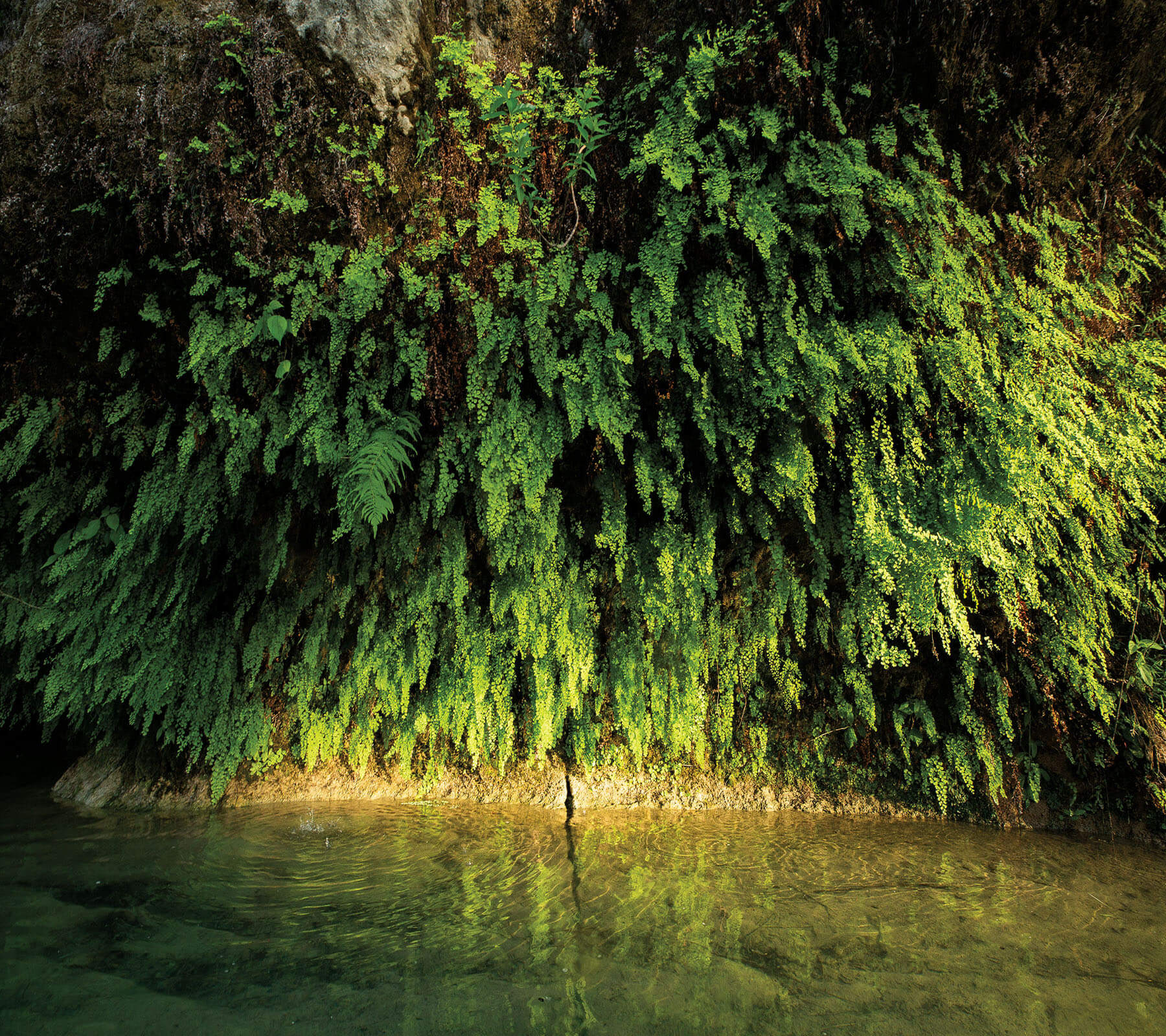
Proper Respects
Responsible River Recreation
The Blanco has the reputation of being a fenced-off, no-access river. Even today, trespassers can still have a gun pulled on them if they’re in the wrong place at the wrong time. Respect “No Trespassing” signs and purple paint markers on fences, trees, posts, and walls. (A Texas law passed in 1997 allows landowners to use purple paint in lieu of “No Trespassing” signs, with the same consequences.) Ignoring those warnings can lead to being arrested, jailed, and/or fined, which can pretty much ruin your river experience. Don’t fret. There are numerous parks where the public can access the Blanco River for swimming (see below). Always be mindful of the local environment and practice “leave no trace” principles, such as proper trash disposal, respecting wildlife, and not collecting what you find, including rocks, plants, and arrowheads.
Above: A fern grotto on the Blanco near Wimberley
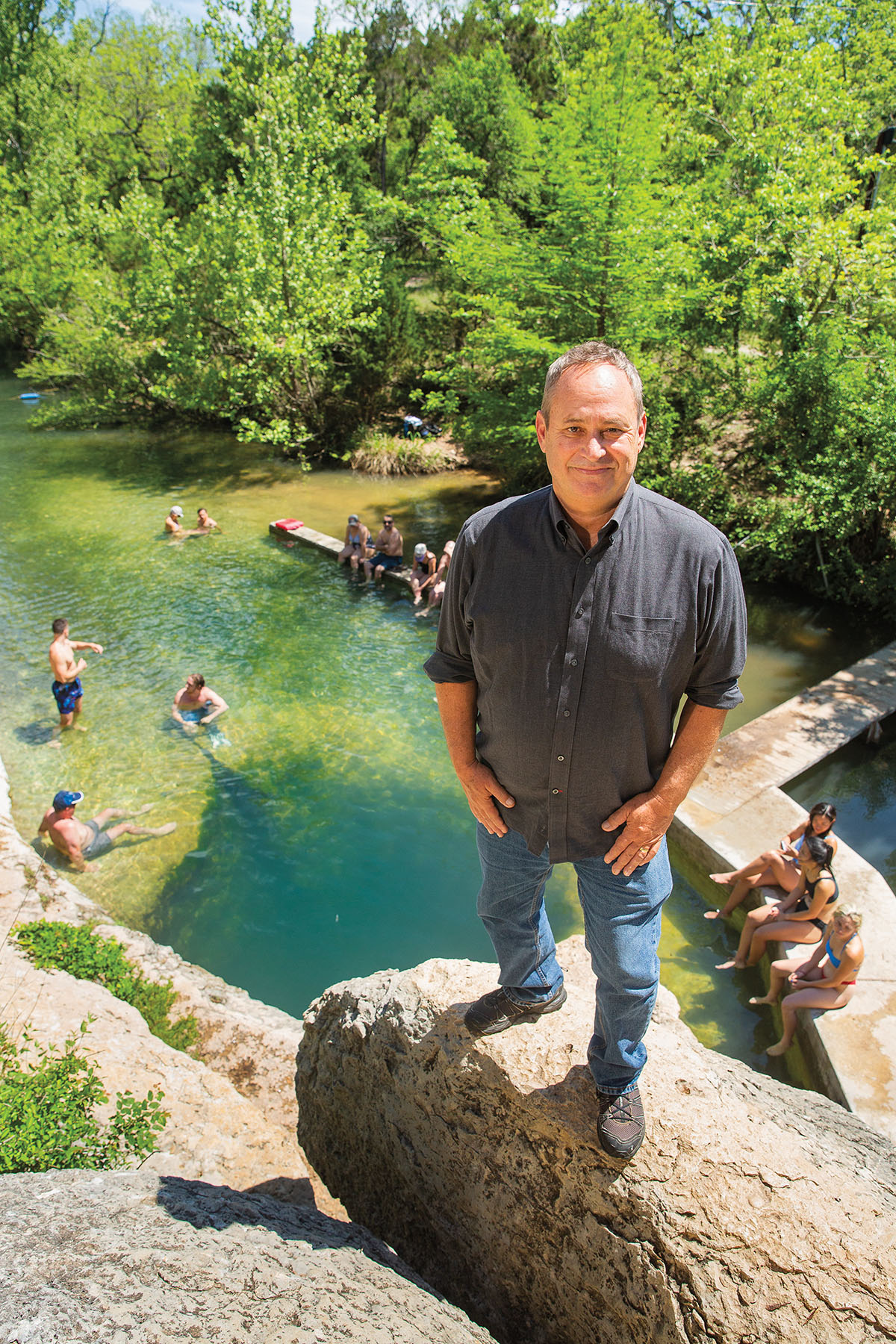
David Baker at Jacob’s Well
David Baker came to the Wimberley Valley in 1988 and bought property on Mount Sharp Road that included a piece of Jacob’s Well. Here he started the Dancing Waters Inn.
If there is a steward of the Blanco watershed, it’s Baker. If you’ve seen Jacob’s Well, you’ll understand.
Located about 5 miles from Wimberley, the deep, heart-shaped underwater cave is the source of Cypress Creek. The well begins as a crack on the limestone surface before tunneling deep into Trinity Aquifer. The mouth of the cave makes an incredible swimming hole, and the sweet sensation of diving off the rocks into the hole’s cold, clear water is a rare thrill, even among other spring-fed pools.
Baker founded the Wimberley Valley Watershed Association and led the campaign for Hays County to purchase the well and its surroundings, replacing a trailer park and tennis courts with an educational and research center.
“My first impetus was to erect a fence and keep people out,” Baker says. “But thinking long term, if we don’t share these special places with people, they won’t care if they’re destroyed. They won’t know. We’ve got to do better connecting the community to these local resources.”
As the protections increase, so have the external challenges. Baker was involved in the successful four-year fight to stop a private company’s plans to pump and ship groundwater out of the county, which was finally resolved earlier this year. In 2019, working with Hays County and other interested parties, Baker helped stop the City of Blanco’s discharge of 1.6 million gallons daily of treated wastewater into the river. The treated water triggered algae blooms on the Blanco that extended far downstream. The town is now using the wastewater to irrigate alfalfa fields.
“These are some of the few clean rivers left in Texas, and even the most thoroughly treated wastewater contributes to their degradation,” Baker says.
It’s a race between conservation awareness and unfettered development in a booming region. In 2000, Jacob’s Well, which provides about 10% to 20% of the Blanco River’s baseflow via Cypress Creek, stopped flowing for the first time in recorded history. In 2008 and 2009, due to drought and groundwater pumping, the well stopped flowing again, and then again in 2011, 2013, and January of this year.
Despite these threats, Baker is an optimist. Last November, 70% of Hays County voters approved a $75 million parks bond for the county to secure land to protect natural resources and increase river access. And Jacob’s Well, he likes to point out, has become an economic engine through tourism. In recent years, overnight lodging has contributed $70 million annually to the economy in Wimberley.
“Last year, 35,000 visitors from 28 different countries came and visited the well. Twice that many visited Blue Hole,” Baker says. “When people see this, they begin to understand how this all fits together.”
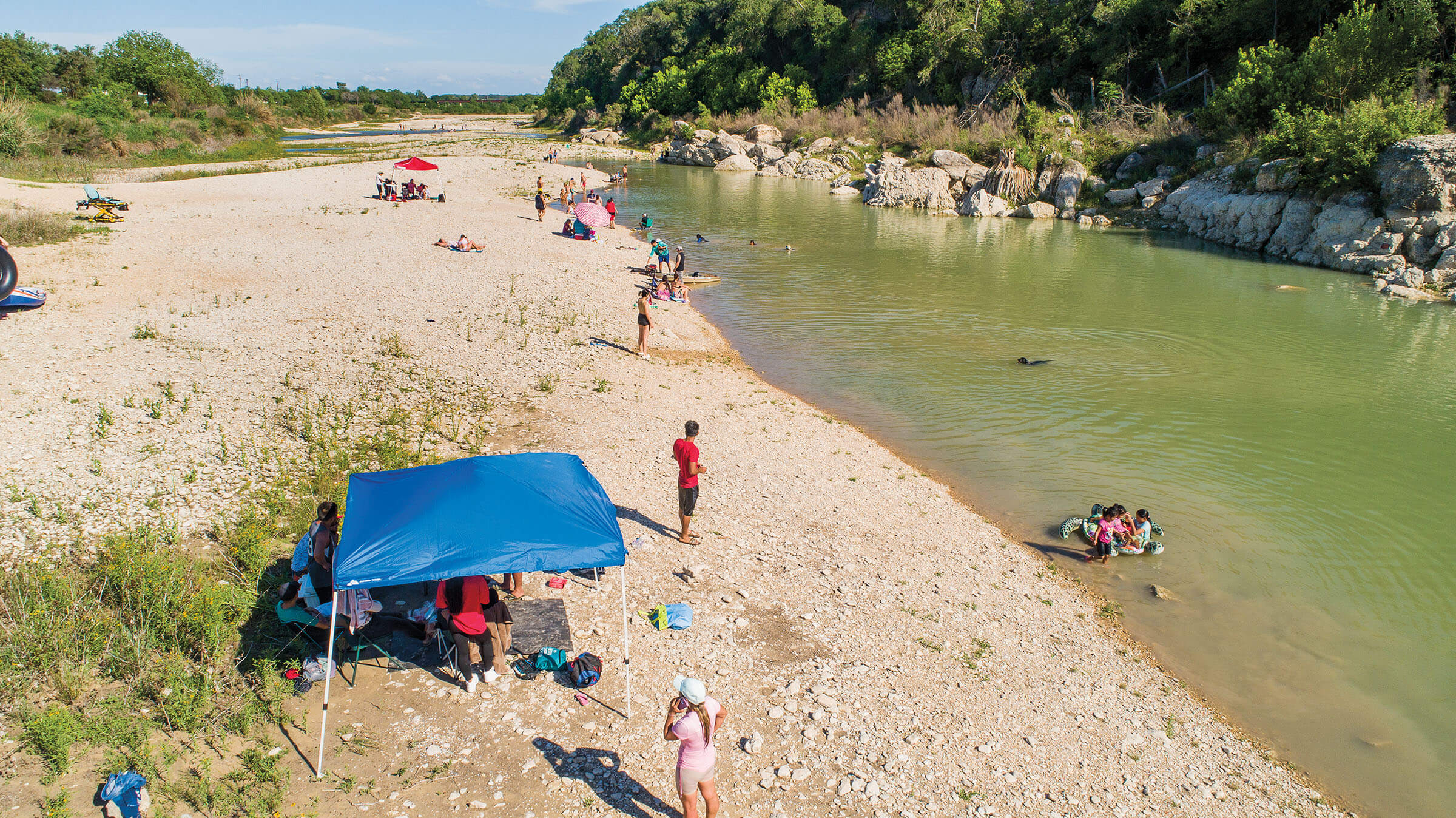
I’ve grown to appreciate the Blanco’s nuances. Some mornings the surface is smooth as glass, sunlight painting shadowy ribbons on the rock bottom. Other mornings, wind ripples the surface, the wavelets sparkling like shimmering diamonds.
My thing is jumping in and swimming about a quarter-mile upstream to the big boulder and beyond, following the contours of the riverbed as I work a steady alternating stroke, stretching, kicking, my body and mind getting locked in a rhythmic, meditative zone. The sight of a snapping turtle moving slowly across the bottom may startle, interrupting the repast. I’ve had the same reaction spotting gar and snakes close by underwater.
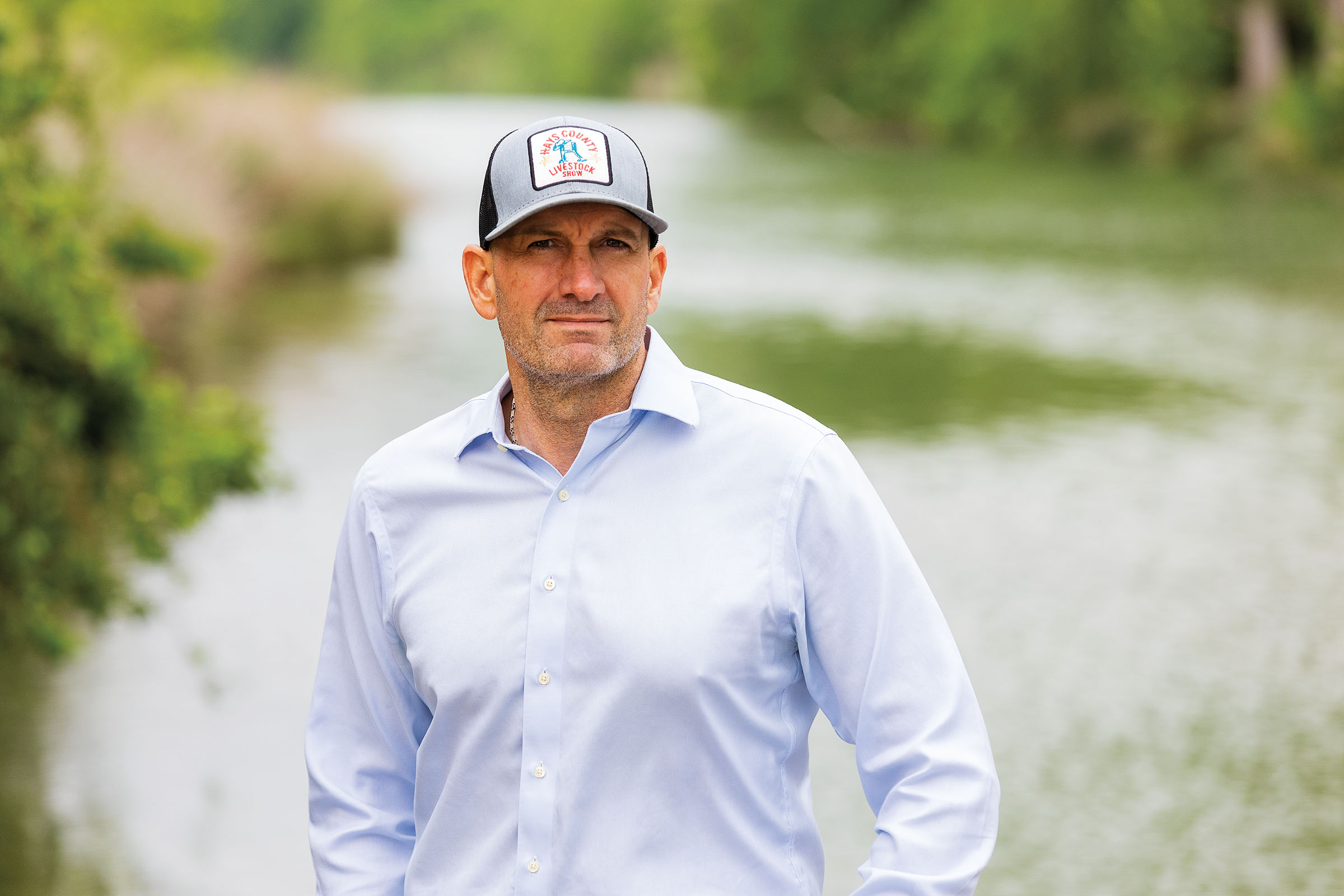
Hays County Commissioner Lon Shell
As a native of San Marcos, Hays County Commissioner Lon Shell has long known about the Blanco’s beauty—and dangers. But still, he says, the growing demands on this local treasure have presented a learning curve for the community. “When we first opened Jacob’s Well as a county park in 2011, we didn’t understand that people from all over the country, and eventually the world, wanted to see it,” he says. “That lesson has been learned.”
Shell has made protection of natural resources a priority. Conserving land around the Blanco improves the river’s water quality and can also mitigate the severity of flooding, he says, by directing development and impervious cover away from the river and encouraging the restoration of riparian habitat that naturally absorbs floodwaters and mitigates erosion.
“There are a lot of people in western Hays County who haven’t been here that long,” he says. “They see the Blanco as a river, but I don’t think they respect or understand the river and its value as much as old-timers. The [2015] flood brought that to the forefront: the importance of managing the resource, conserving it, and potentially reducing the likelihood of flooding.”
Shell is proudest of the Sentinel Peak Preserve, a new 535-acre park. When Shell caught wind of the pending sale of the old El Rancho Cima Boy Scout ranch, he strategized with area officials and the Nature Conservancy to secure some of the land. Located just below the rocky ridge known as Devil’s Backbone, the preserve covers a milelong stretch of the Blanco River, protecting prime habitat for the endangered golden-cheeked warbler. Officials hope to have the preserve ready to open to the public by late 2022 or early 2023.
“The importance of getting people on the land and seeing the river is immeasurable,” Shell says. “Signal Peak is iconic. It’s the perfect spot for us to do this.”
The new preserve brings hope for McGillicuddy, of Texas Parks and Wildlife. I recently caught up with the biologist as he met with science students from St. Edward’s University. “With a property like Sentinel Peak, there is a rare opportunity to start with a blank slate and shape how the land can be managed for both conservation and recreation,” he says.
Pulling up grasses from the bank, McGillicuddy demonstrated how they help prevent erosion and soil loss during floods. The group discussed the importance of landowner stewardship; the restoration of the Guadalupe bass, the state fish; how the Blanco is connected to Barton Springs and San Marcos Springs; the impact of the 2015 flood; and how to manage for future floods.
Such challenges are enough to turn a river lover like me into a worrywart. But the uncertainty of what’s to come is balanced by experiences like an afternoon this spring. Swimming in the river, I raised my head every now and then to gaze at the line of majestic cypresses looming above the bank and to check for red-eared slider turtles sunbathing on the rocks. At moments like these, I can’t imagine a more splendid place on earth.
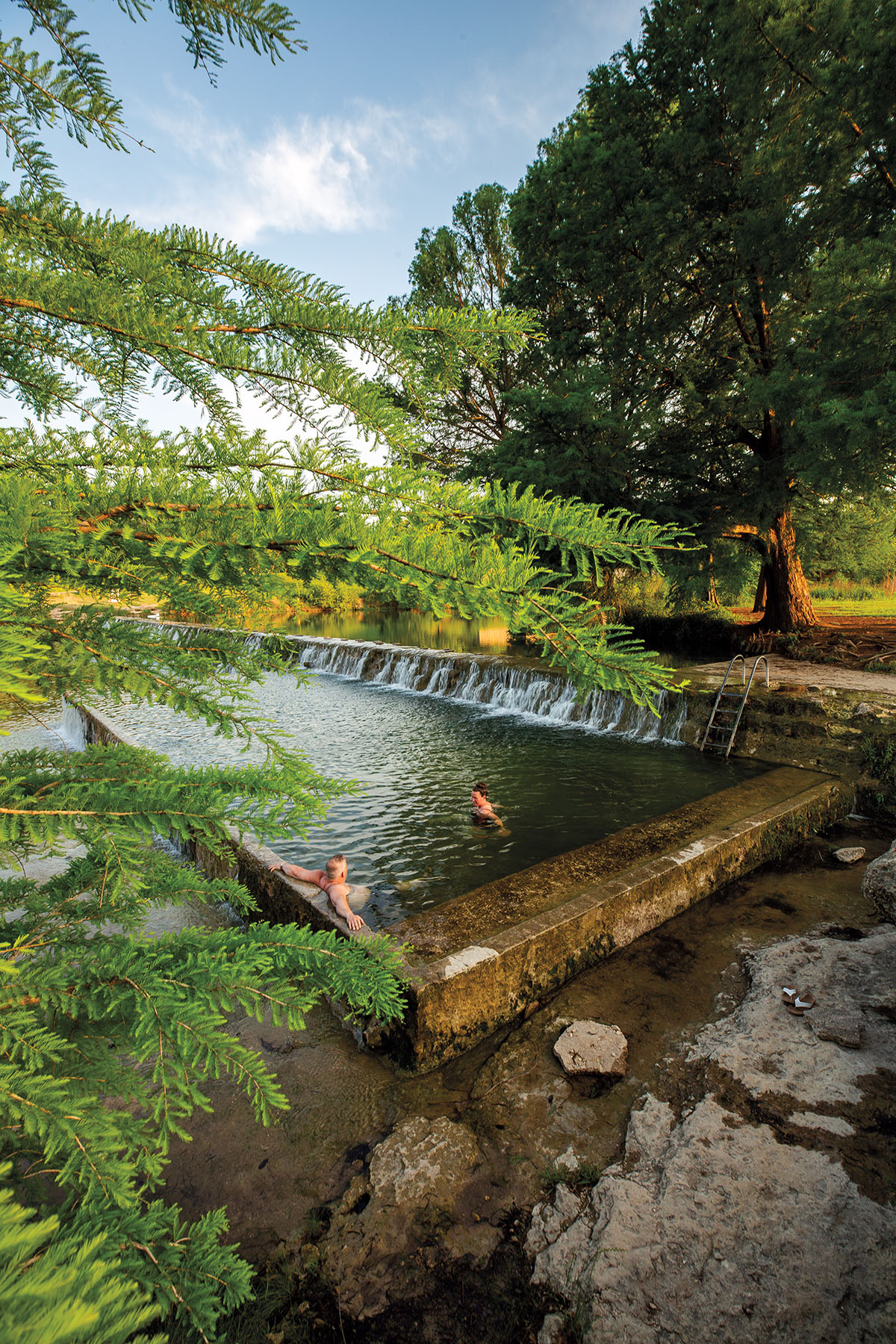
Dive In
Recreating on the River
While private land borders the majority of the Blanco, there are numerous opportunities to swim and enjoy the river’s natural beauty.
Blanco
Blanco State Park: a mile of riverfront, campsites, and cabins. 830-833-4333; texasstateparks.org
Redbud Café: soups, salads, and sandwiches on the square. redbud-cafe.com
Wimberley
Blue Hole Regional Park: Online reservations are required for the swimming hole on Cypress Creek. cityofwimberley.com
Jacob’s Well Natural Area: Advance reservations are required for swimming, but not for the hiking trails. hayscountytx.com
Cypress Falls Swimming Hole: swimming and a hotel. thelodgeatcypressfalls.com
Creekside Cookers BBQ & Bar: great food and outdoor seating. creeksidecookers.com
Rio Bonito Resort: cabins and swimming on the Blanco. riobonito.com
7A Ranch Resort: cabins, a pioneer town, and swimming on the Blanco. 7Aranch.co
San Marcos
Five Mile Dam Park: riverfront with swimming and hiking. hayscountytx.com
Herbert’s Taco Hut: a longtime local Tex-Mex favorite, near the bank of the San Marcos River. 512-392-2993
